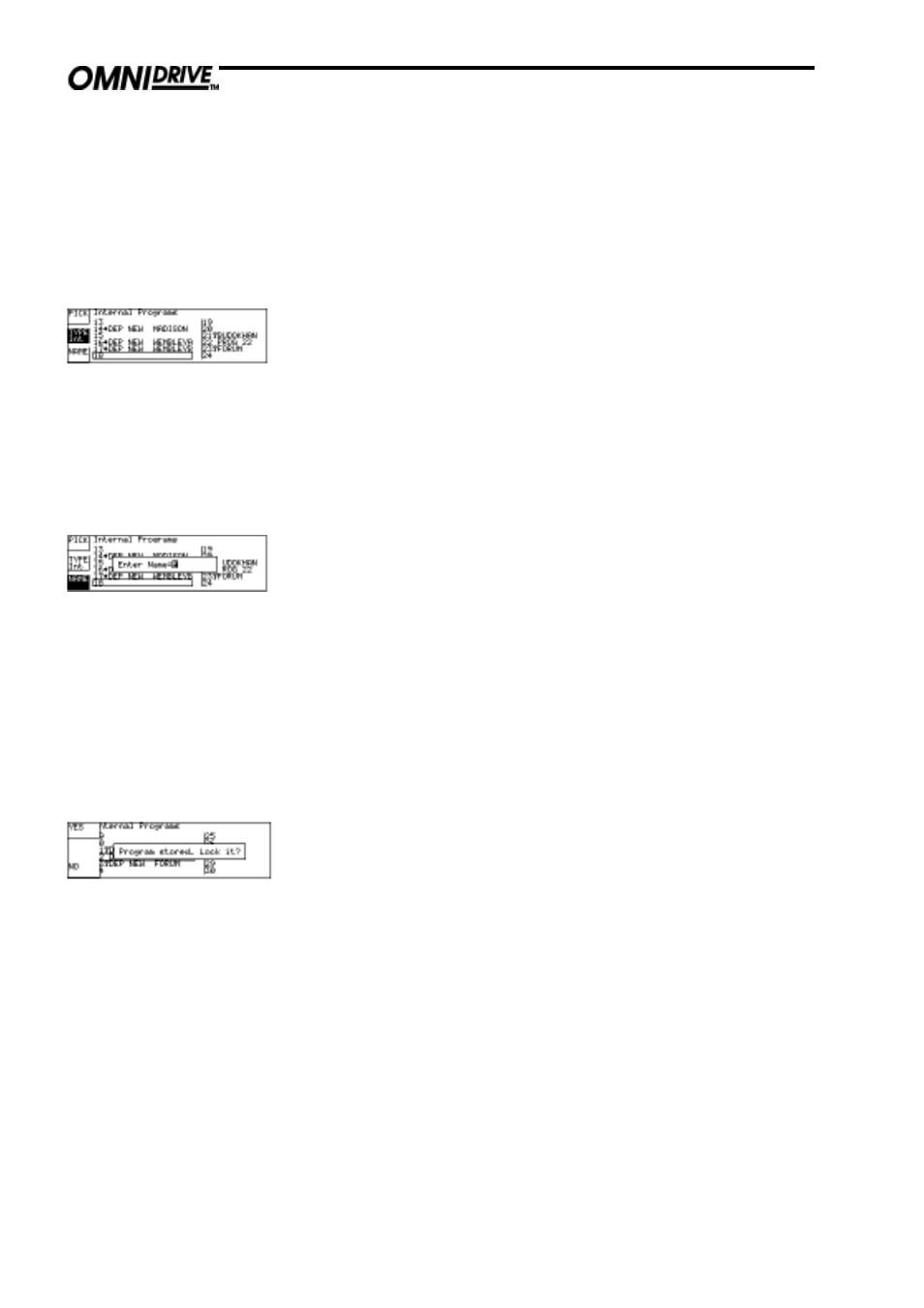BSS Audio FDS-388 OMNIDRIVE Owner's Manual User Manual
Page 40

40
Store Screen
Locking Programs
A second press on the STORE Key will now store the program. If a name has
not been selected and the current file type is INTernal, then a default name will
be allocated automatically. The default name for a card file is the current user
name. The final part of the store process when storing to internal memory is the
option to lock the saved program against accidental overwriting.
The bottom soft key, NAME, allows the program name, or file name in the case
of a PCMCIA card, to be entered or changed. After pressing this key, a naming
window will appear on the screen in which the user builds up the required
word by turning the parameter wheel to select the character required, and
pressing the parameter wheel to move on to the next position, or pushing and
turning to skip forwards or backwards.
Middle Soft Key
TYPE
The middle soft key will select the TYPE of storage, which may be adjusted by
the parameter wheel from the default INTernal setting to either of the PCMCIA
memory card settings; CPrg to store the current program parameters, or CAll to
store the entire contents of the internal memory, including all programs, to a
PCMCIA memory card.
When storing a file to a card program, the file name will default to the current
user name. If the user wishes to use a different file name from the current user
name then select NAME and enter a card file name.
Bottom Soft Key
NAME
If Store Trims is selected to ON in the File Utility Screen, the settings of the
level TRIM controls are added to the crossover LEVEL settings when the
program is stored, although the level of the signal chain is not altered at this
point. If the program is recalled with Store Trims turned ON the user is
prompted to set gain trims to zero after recall. Refer to Section 17.0 File Utility
Screen - Store Trims.
After the second press on the STORE Key, the user will be invited to lock the
program by pressing the top YES Key, or to leave the program unlocked by
pressing the bottom NO Key. OEM programs are automatically locked. Refer
to Section 18.0, OEM Hide.
PCMCIA memory card files cannot be locked. If an attempt is made to store to
a locked location, storage is inhibited, and a warning message is displayed.
Locked programs are identified in the program list by a key symbol next to the
program number. OEM locked programs are identified by a diamond symbol.
For unlocking a locked program refer to Section 17.0 File Utility Screen.
15.1 Locking
Programs
15.2 Front Panel
Trim Settings
To escape from the store process at any time, press the EDIT Key.
